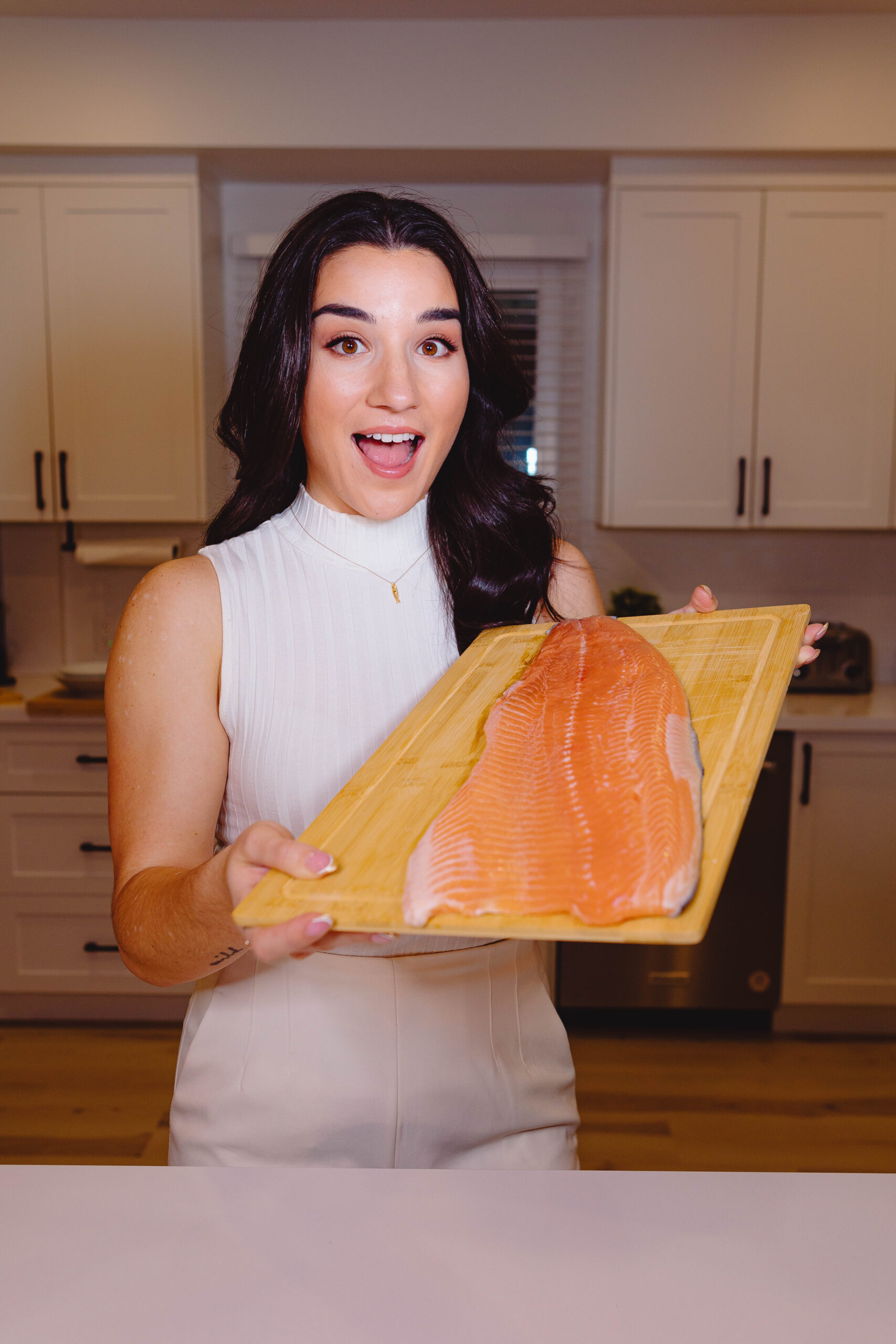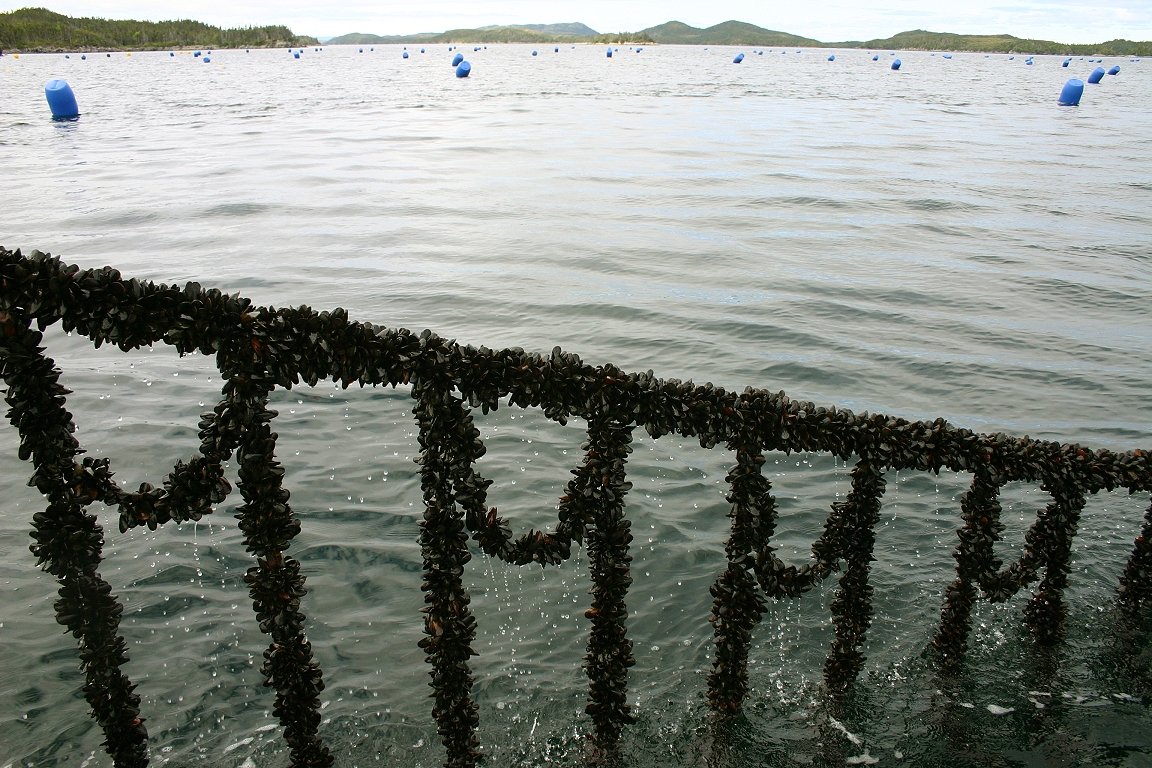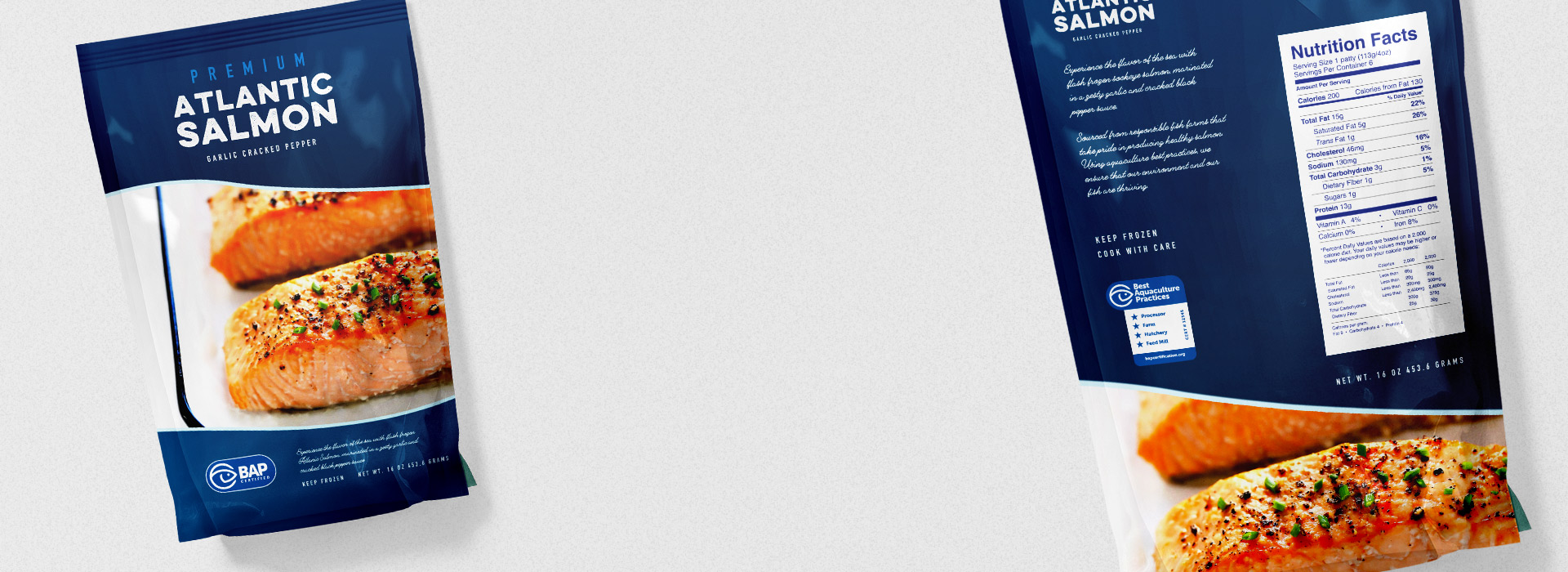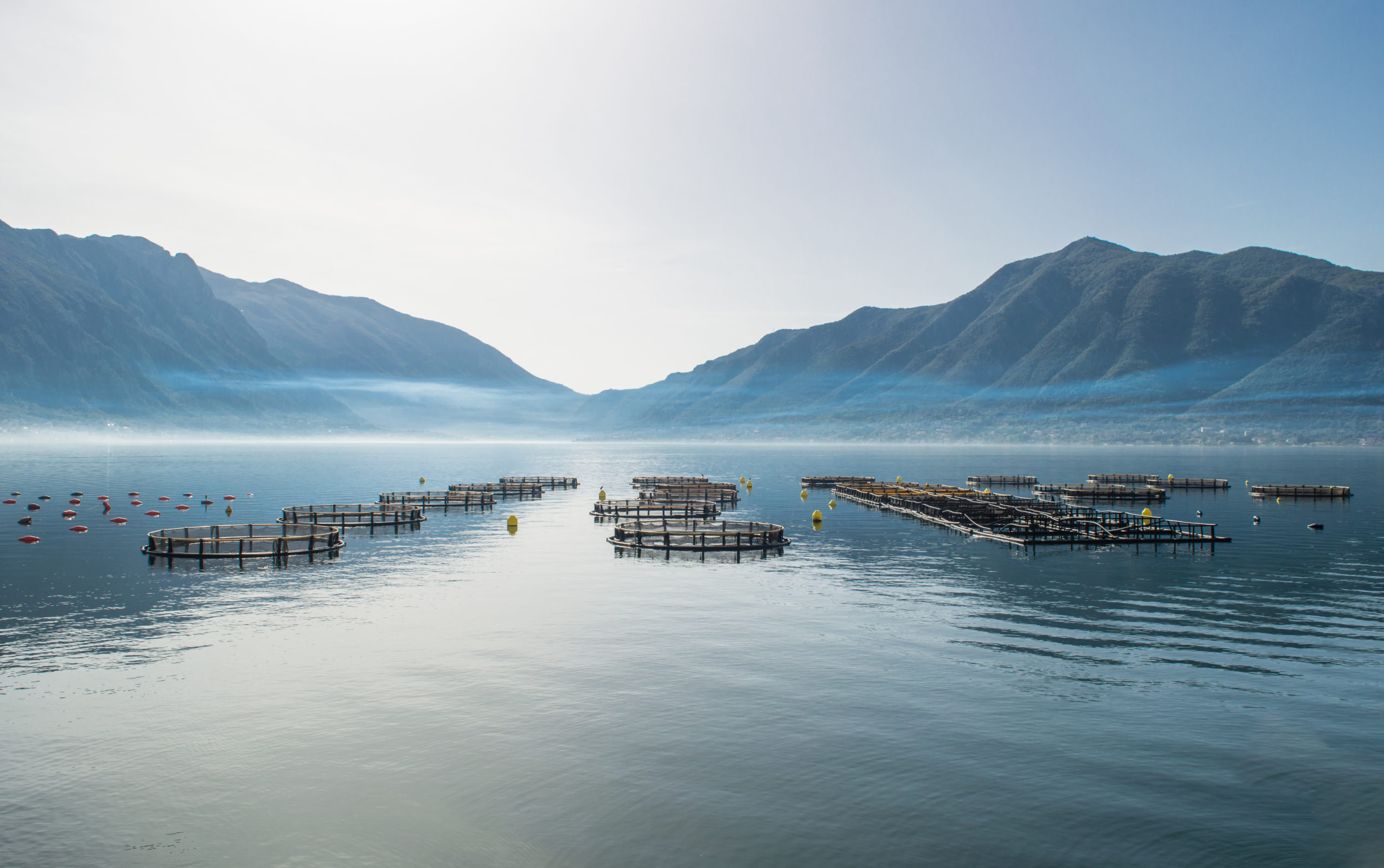
Farmed Salmon Myths Debunked by a Fisheries Scientist
Right before I left for the One Ocean Expedition with Mowi, Dalhousie University released findings of an interesting study, revealing that while Canadians love salmon, they don’t know enough about it!
One of the main goals I had during this project with Mowi and the One Ocean Expedition was to increase awareness about the important contributions of blue foods and address common misconceptions about aquaculture.
I’ve already been sharing a ton about what I’ve learned onboard from scientists working in novel feed development, fish vaccines, and marine spatial planning. But now, I want to break it down and apply it to some of the most common misconceptions that I’ve heard about farmed salmon.
Salmon farming has been quite a contentious topic in Canada, but is this bad reputation still warranted? The industry has made impressive strides in the areas of sustainability that unfortunately, remain overshadowed by its past blunders.
Has salmon farming had its issues in the past? Yes, similar to other shifts in technology. Take for example, organic land based crops. In the 1970s, the development of GMOs and pesticides were used to scale crop volume and of course, we learned a lot from these mistakes. Today, we have improved methods for organic farming that are being widely adopted. The same process has been happening in aquaculture. We’ve been learning from the mistakes made 15 and 20 years ago, and today aquaculture is the fastest growing food producing sector in the world and one of the most efficient ways to produce protein.
Unfortunately, that progress is not being as widely recognized as the industry’s past mistakes, which have somehow managed to defy time and stick to aquaculture decades later. I want to talk about some of these outdated and incorrect assumptions about salmon farming and address why they’re no longer valid and how the industry has improved tremendously in recent years.
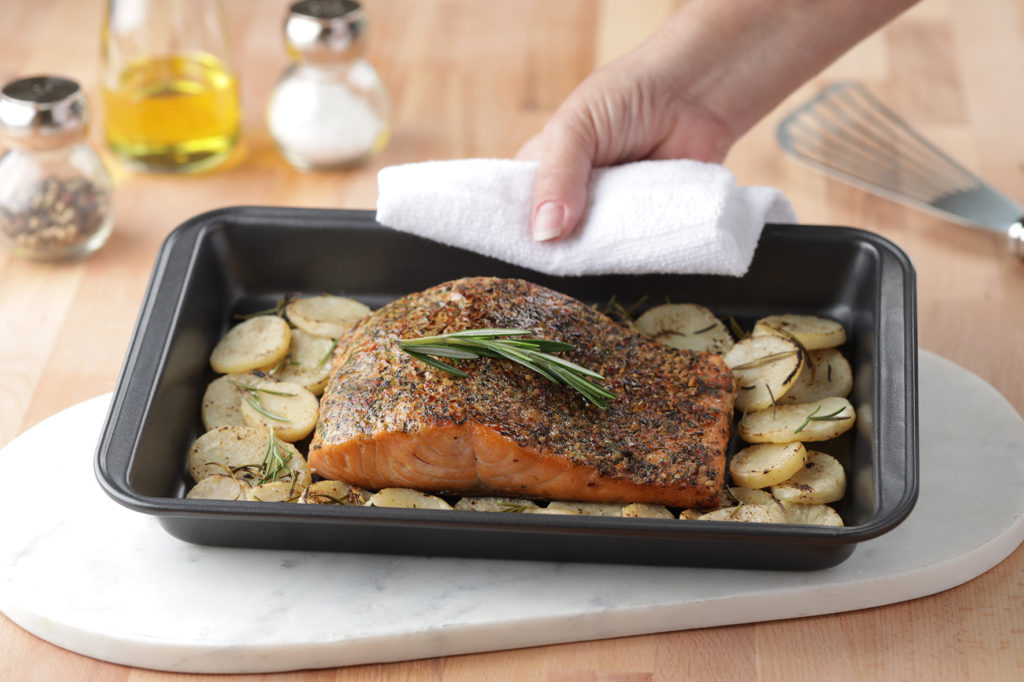
Myth: Salmon farming is bad for the marine environment
Truth: Let’s start with the big one. Some people assume that salmon farming is inherently unsustainable and has adverse impacts on the marine environment. While it’s true that there have been some bad actors in salmon farming, today the industry must meet rigorous environmental standards set by countries, provinces, and international agencies. For example, in Canada, we have a system of checks and balances that are vital to the management of the salmon farming industry: Environmental Assessment; The National Aquatic Animal Health Program; Canada’s National Code on Introductions and Transfers of Aquatic Organisms ; and monitoring of aquaculture sites in BC. As well, there are ongoing monitoring and risk assessment activities by Health Canada and the Canadian Food Inspection Agency (CFIA).
Salmon farming companies also have their own systems of checks and balances. For example, at Mowi, they regularly work with monitors at their sites to ensure they’re having minimal impacts on the seabed and protecting the oceans.
All of their farming operations are also certified according to very strict third-party standards that minimize environmental impact and preserve biodiversity, such as Global GAP, BAP, and ASC. In addition to this, they undertake annual monitoring of their benthic impact, which is the impact of salmon farming on the seabed – something I dig further into below.
Myth: But what about all the waste from salmon farms?
Truth: I wanted to dig into this one a little bit more because this is a very common misconception that I hear quite often. People wrongly assume that salmon farms produce large quantities of waste, from uneaten feed and fish feces, that falls to the bottom of the ocean and accumulates there. However, this is not entirely accurate.
All fish, wild and farmed, produce waste. This is organic matter, meaning it’s not introducing any new toxins into the environment. The difference however, is that salmon farms produce waste in one area, whereas wild fish disperse their waste broadly as they swim in the ocean. Several strategies have been implemented over the years to reduce the concentration of organic matter around salmon farms.
First, improved site guidelines, as well as mandatory environmental assessments, haved helped to greatly reduce the amount of waste from reaching the ocean floor. Proper site placement is important to limit the impact of salmon farms on the seabed. Seawater has a large capacity to absorb organic materials, especially where there are strong ocean currents. Proper siting, combined with periods of inactivity, reverses the temporary “footprint” on the ocean floor.
Take Mowi for example. Last year, 93% of Mowi sites worldwide were classified as very good or good in terms of their impact on the seabed. They work with regulators on the sites that need improvement and immediately take corrective action. This may include stopping or reducing production, repositioning the pens and/or increasing the fallow period (the time between production cycles) to allow the seabed time to recover from organic loading.
Myth: Farmed salmon is not as healthy as wild salmon.
Fact: Farmed salmon has just as much nutritional value as its wild counterpart. A lot of science and innovation has gone into perfecting the diets and living conditions of farmed salmon to make sure they as closely replicate their wild counterparts.
While some may have personal texture and colour preferences that can influence a person’s impression of farmed and wild salmon, their tastes and nutritional profile are nearly identical. Both wild and farmed salmon are an excellent source of lean protein, Omega-3 fatty acids, and other vital nutrients.
Some even argue that farmed salmon is healthier than wild salmon because you can control its inputs. Where a wild salmon swims throughout the ocean and eats other wild fish and potentially other items that might be in the marine ecosystem, farmed salmon are fed a scientifically managed nutrition and diet, in which everything the fish ingests can be accounted for.
Myth: It takes too many wild fish to feed farmed salmon, so we’re still depleting fisheries.
Truth: In the wild, an Atlantic Salmon consumes about 10kg of smaller marine life per kg of bodyweight. A farmed salmon however, requires far less. For example, at Mowi they use 0.68kg of low consumer preference fish (like anchovies and sardines), to produce 1kg of fresh, healthy salmon. This is called the FIFO (Fish In, Fish Out) ratio. I have talked about this in previous videos, but in order to be sustainable, this number should always be lower than one.
Mowi only sources their wild fish from sustainably managed fisheries that are certified by the MSC or a part of FIPs. They are constantly working to decrease their reliance on wild fish for their feed. Over the last five years, the salmon farming industry has reduced its wild fish use by 40%. They’ve done so by using more vegetable-based protein in the diets given to salmon. In fact, the salmon farming industry uses only about one-third of available fish meal and fish oil; the rest is used in animal feeds, pet food and in fertilizers.
Myth: Farmed salmon are pumped full of antibiotics
Truth: Farmed salmon are not fed or injected with growth hormones. Antibiotics are provided by veterinarians and only if required and are strictly controlled by authorities such as Health Canada. Maximum residue limits for each drug are set and must be met through appropriate withdrawal times following treatment before the fish can be harvested. Treated fish are monitored and analyzed before harvesting to ensure there are no residues and no impact on the quality of the final product.
It’s worth noting that in comparison to land-based farmed animal production, salmon farming uses the least amount of antibiotics. In recent years, advances in vaccine development, similar to the practice used for raising livestock, have resulted in a significant reduction of antibiotic use.
Myth: Farmed salmon can’t feed the world.
Truth: On its own, no, farmed salmon cannot feed the world. The same way that tofu alone can’t feed the world. But farmed salmon and other types of sustainable aquaculture are a critical piece of our future sustainable food systems. The majority of salmon that we eat today comes from aquaculture.
Food from the ocean is key to providing nutritious food with minimal environmental impact. Recent high-impact research such as the Blue Foods Assessment, the High Level Panel for a Sustainable Ocean Economy, the EAT Lancet Report, and a landmark study called The Future of Food From the Sea, have all highlighted the importance of aquaculture development for feeding the world and supporting a sustainable ocean economy.
If you want to know more about how Mowi is working to increase the world’s access to healthy and sustainable food from the ocean while having a positive long-term economic and social impact, check out their Leading the Blue Revolution Plan. This plan describes their sustainability strategy which entails Mowi’s commitments and actions that allow them to unlock the potential of the ocean as a food source for present and future generations.
What other farmed salmon misconceptions do you want to see addressed? Leave a comment down below or connect with me on social media for part two!

